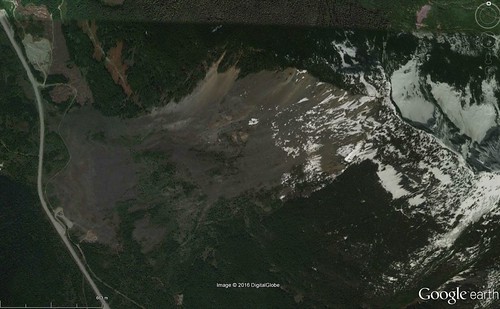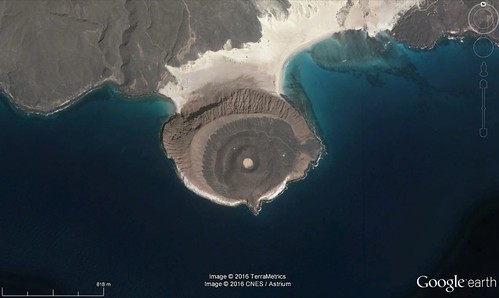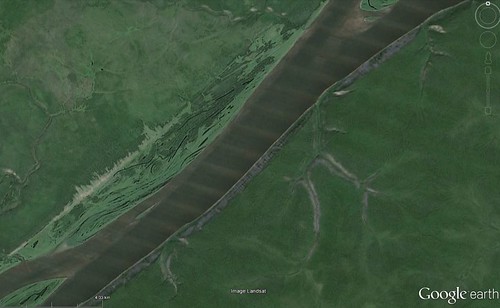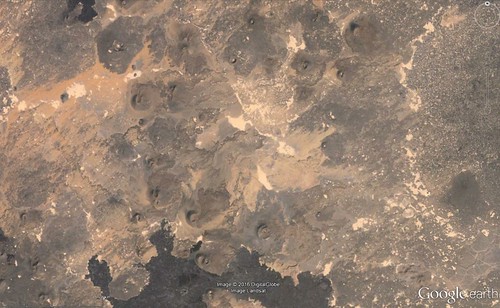Something about Felix's image for contest 567 struck me as familiar, probably after searching long and hard through deserts across the southwestern US for previous contests, and it was not long before I came across Blackhawk Landslide, off the northside of the San Bernardino Mountains, just east of LA. Location: 34.41N 116.79W.
From a thesis on the geology and mechanics of the slide at
http://thesis.library.caltech.edu/691/" is this explanation.
Blackhawk Mountain, a resistant mass of marble thrust northward over uncemented sandstone and weathered gneiss, rises above southeastern Lucerne Valley at the eastern end of the rugged 4000-foot escarpment that separates the San Bernardino Mountains on the south from the Mojave Desert on the north. Spread out on the alluvial apron at the foot of the mountain is the Blackhawk rockslide, a lobe of nearly monolithologic marble breccia 30 to 100 feet thick, 2 miles wide, and nearly 5 miles long. At least two earlier similar but smaller rockslides have occurred in the area.
The rocks of the area comprise late Tertiary and Quaternary fanglomerates and breccias derived mainly from the gneiss, quartzite, Carboniferous marble, and Cretaceous quartz-monzonite of the San Bernardino Mountains. Uplift of Blackhawk Mountain occurred in two stages after deposition of the older fanglomerates and breccias: the first by over-thrusting from the south, and the second by monoclinal folding along a northwest-trending axis.
Geological evidence in the area shows that the Blackhawk rockslide traversed the gently inclined alluvial slope as a nearly nondeforming sheet of breccia moving more than 50 miles per hour. The hypothesis that compressed air, rather than water or mud, constituted the lubricating layer on which the breccia sheet slid qualitatively explains all of the principal physical features of the slide lobe. Theoretical analysis of the flow in the lubricating air layer indicates the quantitative feasibility of the air-lubrication hypothesis for the Blackhawk slide.
Contest #568:

Rules, tips and previous WoGEs are collected by Felix on his
http://woge-felix.blogspot.ca/ blog with a KML file available with all WoGEs.






